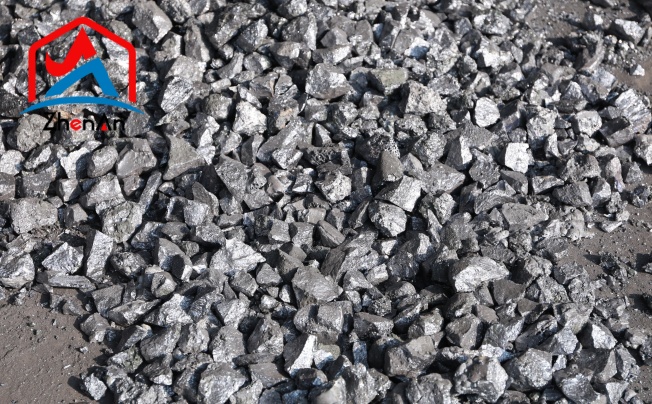Iron-silicon, commonly known as FeSi, is a remarkable alloy that has earned its place of prominence in various industries due to its exceptional properties and versatility. This alloy primarily comprises iron (Fe) and silicon (Si), forming a solid solution with varying silicon content.
Iron-Silicon in Electrical Engineering
Magnetic Properties of Iron-Silicon
Iron-silicon, also known as silicon steel or electrical steel, possesses remarkable magnetic properties that make it a crucial material in the field of electrical engineering. Ferromagnetism refers to the phenomenon where certain materials, like iron-silicon, can exhibit strong magnetization even in the absence of an external magnetic field. This arises from the alignment of atomic spins within small regions called magnetic domains. In iron-silicon alloys, these domains are easily aligned due to their crystalline structure and the presence of silicon atoms. This property allows iron-silicon to become magnetized quickly and retain its magnetism even after removing the external field. The high saturation point (the maximum amount of magnetic flux a material can hold) makes it ideal for applications requiring strong permanent magnets.
Role of Iron-Silicon
Iron silicon's exceptional magnetic properties enable its application in creating robust permanent magnets. By manipulating its composition and carefully controlling heat treatment processes, manufacturers can craft magnets with varied coercivity levels – a measure of a material's resistance to demagnetization – tailored for specific needs. Permanent magnets made from iron-silicon alloys find utility across various industries.
Renewable energy sectors such as wind power generation, serve as key components in turbines to convert mechanical energy into electricity efficiently. Moreover, these magnets play pivotal roles in electromechanical devices like loudspeakers and headphones by converting electrical signals into sound vibrations with remarkable fidelity.
Transformers and Electrical Motors
Transformers are vital devices facilitating voltage transformation for efficient energy distribution across power grids. Iron silicon plays an instrumental role by minimizing energy losses through eddy currents – undesired circulation currents induced by changing magnetic fields that create heat and dissipate power unnecessarily. By employing laminated sheets made from iron-silicon alloys as transformer cores, eddy current losses are significantly reduced.
Similarly, electrical motors rely on iron-silicon laminations within their cores to enhance their performance characteristics. These laminations disrupt pathways for eddy currents that would otherwise generate excessive heat during motor operation.
As a result, motor efficiency is improved while ensuring reliable operation at optimal temperatures. Iron-silicon's unique combination of ferromagnetic properties enables efficient energy transfer while mitigating losses caused by unwanted current circulation.
Iron-Silicon in the Automotive Industry
The Power Behind Engine Components: Piston Rings and Cylinder Liners
With its exceptional properties, iron-silicon alloy plays a vital role in enhancing the durability and performance of engine components in the automotive industry. One such application is seen in piston rings and cylinder liners. Piston rings are crucial for sealing the gap between the piston and cylinder wall, ensuring efficient combustion, and reducing oil consumption.
By incorporating iron-silicon into these rings, manufacturers can greatly enhance their wear resistance, resulting in improved longevity and reduced maintenance requirements. Additionally, the inclusion of iron-silicon in cylinder liners provides superior hardness and corrosion resistance, essential for withstanding constant friction and exposure to high temperatures.
Fortifying Strength: Crankshafts and Connecting Rods
Another significant area where iron-silicon alloy finds application is within crankshafts and connecting rods. These components endure substantial stress due to reciprocating motion during engine operation.
The addition of iron silicon enhances their strength, allowing them to withstand higher loads without compromising performance or safety. This alloy's unique combination of toughness, stiffness, and resistance to wear ensures that crankshafts remain robust under extreme conditions while connecting rods maintain structural integrity during high-speed operation.
Efficient Electrical Systems: Ignition Coils, Alternators, and Magnetic Sensors
Beyond engine components, iron-silicon also plays a crucial role in various electrical systems within automobiles. Ignition coils are responsible for producing high-voltage sparks required for efficient fuel combustion within an engine's cylinders.
By utilizing iron-silicon cores within these coils, manufacturers achieve improved energy transfer efficiency due to the enhanced magnetic properties offered by this alloy. Similarly, alternators rely on rotating magnetic fields generated using iron-silicon laminations inside their stator cores to produce electricity for charging the vehicle's battery while powering electrical accessories simultaneously.
Furthermore, magnetic sensors equipped with iron-silicon components contribute to accurate speed control systems by precisely measuring rotational speeds or detecting gear positions in modern vehicles fitted with anti-lock braking systems (ABS) or automatic transmissions (AT). These sensors ensure reliable performance even under challenging conditions such as rapid acceleration or deceleration.
Iron-Silicon in Construction Materials
Reinforcing steel bars (rebars)
When it comes to ensuring the structural integrity of various construction projects, reinforcing steel bars, commonly known as rebars, play a crucial role. These rebars are embedded within concrete structures to provide strength and stability, especially in reinforced concrete structures like bridges, buildings, and highways. Iron-silicon alloys have emerged as a game-changer in this field due to their remarkable properties.
The addition of iron-silicon to rebars significantly enhances their strength, ductility, and corrosion resistance properties. The inclusion of silicon in the alloy matrix forms a protective oxide layer on the surface of the bars.
This oxide layer acts as a barrier against environmental factors such as moisture and corrosive agents like chlorides and sulfates, thus preventing corrosion-induced deterioration. Furthermore, the iron-silicon alloy's superior mechanical characteristics improve the load-bearing capacity of rebars while maintaining their flexibility.
Soundproofing materials
In an ever-growing urban landscape with increasing noise pollution concerns, soundproofing materials have become essential for creating peaceful environments within buildings. Iron-silicon laminates have proven to be highly effective in reducing noise transmission through walls.
The unique magnetic properties of iron-silicon alloys make them ideal for soundproofing applications. By utilizing iron-silicon laminates in walls or partitions, unwanted sounds can be effectively dampened due to their high magnetic permeability.
These laminates absorb sound waves by converting acoustic energy into small electrical currents within the material itself. The result is a significant reduction in noise levels passing through the structure.
Sound-absorbing panels with high permeability due to iron-silicon composition
In addition to soundproofing barriers using iron-silicon laminates between walls or partitions, sound-absorbing panels capitalize on the composition of iron-silicon alloys. Their high magnetic permeability allows these panels to absorb and dissipate sound energy efficiently rather than reflecting it into space.
By incorporating iron-silicon alloys into these panels' composition, they provide excellent acoustic absorption characteristics across a wide range of frequencies. This ensures that reverberation is minimized within enclosed spaces such as concert halls or recording studios while maintaining superior aesthetics.
Iron-Silicon in Electronics Industry
Semiconductor Devices
In the vast realm of electronics, iron-silicon alloys find their remarkable applications within semiconductor devices. These devices are at the heart of modern technology, enabling us to communicate, compute, and connect in ways that were once unimaginable. The unique electrical properties of silicon, combined with the enhanced magnetic properties imparted by iron-silicon additions, make it an ideal choice for semiconductor fabrication.
Explanation of the Use of Silicon as a Semiconductor Material
Silicon has revolutionized the electronics industry due to its intrinsic semiconductor nature. At an atomic level, silicon possesses four valence electrons that form covalent bonds with neighboring atoms, creating a crystalline lattice structure.
This allows for controlled conductivity by manipulating electron flow through doping techniques. When small amounts of specific elements are introduced into the silicon crystal lattice—doping—its electrical characteristics can be modified.
By adding impurities such as phosphorus or boron, two types of semiconductors are created: n-type and p-type. N-type silicon has excess electrons introduced through doping with elements like phosphorus, resulting in a negatively charged material that conducts electricity.
p-type silicon is doped with elements such as boron to create "holes" or deficiencies in electrons which behave like positively charged carriers. Through judicious engineering and careful arrangement of semiconductor layers within devices like transistors and diodes, these tiny components can perform complex tasks such as amplification and switching that fuel our digital world.






